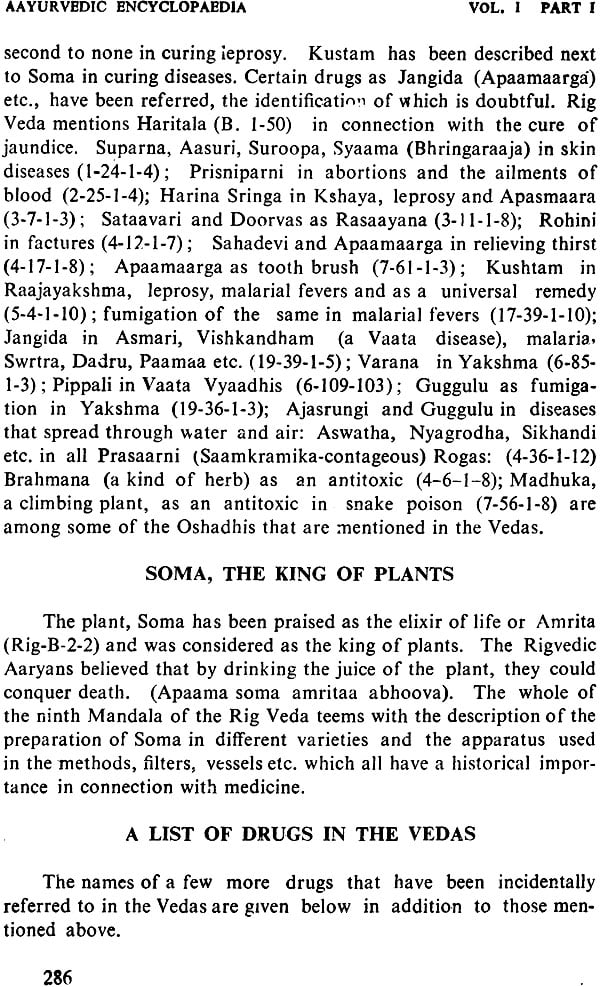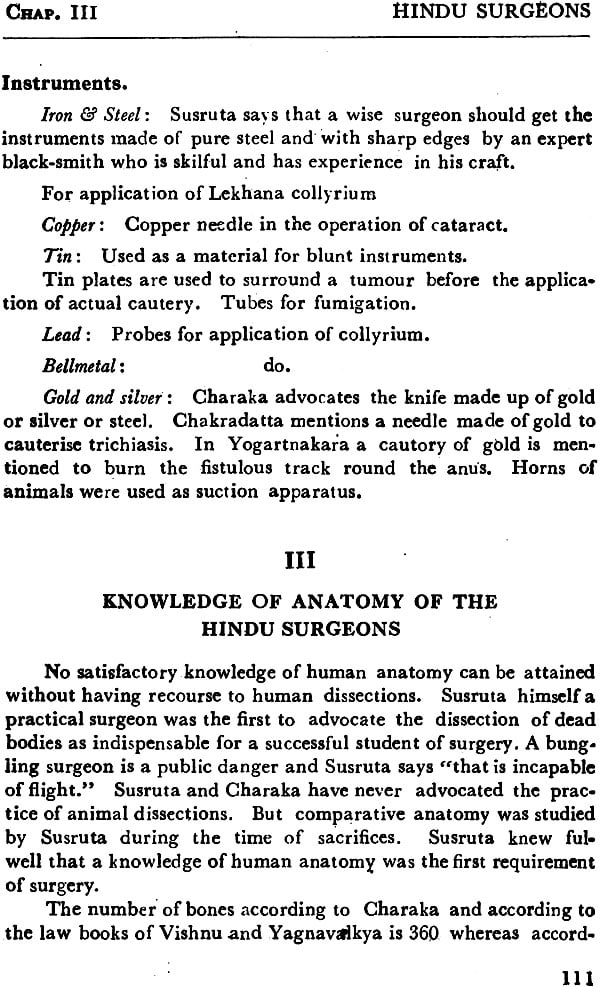
Ayurvedic Encyclopaedia (2 Volumes)
Book Specification
| Item Code: | IDE031 |
| Author: | Dr. A. Lakshmipathi |
| Publisher: | Chaukhamba Sanskrit Pratishthan |
| Language: | English |
| Edition: | 2004 |
| ISBN: | 8170842368 |
| Pages: | 1270 |
| Cover: | Hardcover |
| Other Details | 8.8" X 5.8" |
| Weight | 1.73 kg |
Book Description
This is a Commemoration Volume. A few weeks before my 75th birthday i.e. the 3rd March, 1995, one of my students, Ayurveda Acharya Mukkamala Venkata Shastri of Vijayawada, conceived the idea that a Commemoration Volume consisting of the felicitations and the reminiscences recevied from my friends and admirers on the occasion of the celebration of my 75th birthday might be published as a mark of respect towards me. He issued an appeal. Another student of mine, Sri Bhishagavara Veturi Sankara Shastri of Muktyala wished to publish a Birthday Special Number of his Journal "Sri Dhanvantari" as a symbol of the deep sense of devotion to me as his Guru. I myself thought that the enthusiasm on the part of my student and followers should be canalised and utilised for some useful purpose.
I felt deeply grateful to Almighty God for giving me this youthful vigour and mental alertness at this age when so many of my playmates and classmates have disappeared when quite young. I wanted to devote my energy to the sacred task of collecting all the available information on Ayurveda, which has accumulated during the present generation into a comprehensive volume and offer it to the All- Merciful God as a sacrificial offering (Yajna) as a symbol of my gratitude to Him.
I issued an appeal individually to over 100 scholars all over India to contribute their mite to this Gnana Yajna as a Dana (Gift of Knowledge) as their sacrificial offering. Some circulars were issued giving my suggestions regarding the plan of the work and indicating the special subjects on which the articles are to be contributed.
A Board of Editors consisting of five members was constituted by the 40th All India Ayurvedic Congress held at Trivandrum. The response was very sincere. But some of the article fell short of the standard that I set for them. Several others had to be omitted on account of their overlapping each others.
Therefore, more than half of the articles had to be rejected for some reason or other. I had to take upon myself the duty of compiling the bulk of the matter myself, in order to make the Encyclopaedia worthy to the name.
My heartfelt thanks are due to all those who have contributed the articles and I offer my apology to all those whose articles are not include in the present Volume as it is published.
I must mention here how the Commemoration Volume came to be called the Ayurvedic Encyclopaedia. I know that the name of Encyclopaedia is a very ambitious name. I entrusted to Sri Ayurveda Mahopadhyaya T.P. Ramanujaswamy Garu of Ramathirtham, the work of compiling all the available information from the Ayurvedic texts on the subject of day-to-day practice of Ayurveda in a very concise manner, so that it may be handed over is without any question the greatest authority both in theory and practice of Ayurveda. I wanted to name the volume Ayurveda Chikitsa Sangrham (Manual of Ayurvedic Treatment) and requested him to be as concise as possible. His articles were no doubt concise, but also very exhaustive. I tried to abridge them but I could not remove even one sentence without spoiling the utility of the book. I, therefore decided not to restrict him, but to name this work the Ayurveda Chikitsa Sarvaswam, as I thought that it richly deserved the name. I then requested him to include all the information that he wanted to do on each subject. This is how the volumes are now called the Ayurvedic Encyclopaedia- Ayurveda Vijnana Sarwaswam. I have satisfied myself because the volumes deal with the Ashtangas of Ayurveda as far as is possible. I may also say that these volumes contain all that I know of Ayurveda and I fell that I have only done my duty in placing them before the scientific world for their scrutiny.
There is no limit to knowledge. The best Encyclopaedia can only be imperfect because human knowledge is growing daily by experience.
I request the public to accept the Encyclopaedia in the spirit in which it is offered, with all its defects and to build upon it their own additions and alterations. Only two Volumes are now published. Manuscripts for three or four Volumes are now ready. They are awaiting publication as soon as funds become available.
As soon as the publication of the Ayurvedic Encyclopaedia was known to him, Excellency Dr. B. Pattabhi Sitaramaya Garu, Governor of Madhya Pradesh, and Justice P. Satyanarayana Rao Garu, Judge of the Andhra High Court sent me a donation of Rs.I,OOOI - each as a token of their high appreciation of this idea. A few others have also sent me some donations.
I thank the Andhra Government and the Government of India for coming to my help in the publication of this work. My heartfelt thanks are due to the Board of Editors who encouraged me in this difficult task, and to all the contributors for their sincere efforts to help the cause of Ayurveda. My thanks are especially due to Sri Ayurveda Mahopadhyaya T. P. Ramanujaswamy Garu of Ramatirtham and to Sri Ayurvedacharya Tejomurtula Gurunatham Garu of Ramachandrapuram, East Godavari District. Many thanks are also due to Pandit Kaladi Parameswaran Pillai, Research Professor of the Ayurvedic College, Trivandrum, for his undertaking to scrutinise the manuscripts.
I also thank the typists who undertook the laborious task of typing the manuscripts, the Devanagari Power Press, Guntur, and the Cosmic Press, Madras, for promptly executing the printing, and Dr. Valluru Subba Rao Garu, Guntur, and others for helping me in the printing of the Ayurveda Encyclopaedia.
VOLUME - 1
THEORIES OF AYURVEDA
| PART I: BACKGROUND OF AYURVEDA | ||
| 1. | Historical Background (Bharatiya Vijnanam) | 1 |
| 2. | Philosophical Background (Bharatiya Tatwa Vijnanam) | 124 |
| 3. | Definition of Ayurveda, Its Scope, Importance and Utility (Ayurvedam Anantaparam) | 209 |
| 4. | Faith Treatment in Ayurveda (Daivavyapasraya Chikitsa) | 261 |
| 5. | History of Ayurveda | 277 |
| 6. | Study of Ayurveda in Ancient India | 370 |
| 7. | Tridhatu Siddhanta | 375 |
| 8. | Ayurveda, An Adhyatmika Science
| 397 |
| PART II : HYGIENE | ||
| 1. | Sadvrittam (Good Conduct Social Hygiene) | 421 |
| 2. | Swasthavrittam (Personal Hygiene) | 466 |
| 3. | Dinacharya at the age of 75 | 489 |
| 4. | The Science and Art of Massage | 495 |
| 5. | Utility of Massage in Treatment of Diseases | 539 |
| 6. | Ayurveda versus Allopathy
| 553 |
| PART III: REPORT ON AROGYA YATRA | ||
| 1. | Report on Arogya Yatra | 561 |
| 2. | Execution of the Plan | 565 |
| 3. | Self Supporting Education | 573 |
| 4. | Addresses of Dr. Lakshmipathi | 576 |
| 5. | Census of Vaidyas in Dandulur Firka | 602 |
| 6. | Lessons of Arogya Yatra
| 607 |
| PART IV: APPENDIX | ||
| 1. | Financial Statement | 612 |
| 2. | Arogya Yatra Establishment office Staff Secretariate Department | 613 |
| 3. | 1. Government of Andhra Pradesh 2. Government of Andhra Pradesh (Health Department) | 616 |
| 4. | Good Wishes | 618 |
| 5. | A note on who is a quack | 622 |
| 6. | Arogya Yatra Pilgrimage of Health Certificate of Merit | 625 |
| 7. | Letter from the President of India | 626 |
PRACTICE OF AYURVEDA
| PART I: PANCHAKARMAS | ||
| 1. | Summary of Ayurvedic Treatment | 1 |
| 2. | Other Purificatory Measures in Ayurveda | 81 |
| 3. | General Survey of Ayurvedic Treatment | 95 |
| 4. | The Ayurvedic Pharmacology (Rasa, Virya, Vipaka etc. in Ayurveda)
| 133 |
| PART II: MIDWIFERY & SURGERY IN AYURVEDA | ||
| 1. | Midwifery in Ayurveda | 1 |
| 2. | A Comprehensive and Straight Forward Analysis of "A Healthy Progeny" in Ayurveda | 22 |
| 3. | Surgery in Ayurveda | 102 |
| 4. | (Neuro) Brain Surgery in Ayurveda
| 128 |
| PART III: DIAGNOSIS IN AYURVEDA | ||
| 1. | The Importance of Diagnosis | 1 |
| 2. | Nidana - Cause of Disease | 7 |
| 3. | Purva Rupa | 16 |
| 4. | Rupa | 20 |
| 5. | Upasaya - Diagnosis by Experimental Treatment | 23 |
| 6. | Samprapti | 28 |
| 7. | Ashta Sthana Pariksha | 31 |
| 8. | Nadi-Pulse | 34 |
| 9. | Mutra Pariksha (Examination of Urine) | 54 |
| 10. | Mala Pariksha (Examination of Stools) | 67 |
| 11. | Jihva - The Tongue | 69 |
| 12. | Sound (Sabda) - Examination of Voice (Sabda Pariksha) | 72 |
| 13. | Sparsa - The Sense of Touch | 73 |
| 14. | Druk - Eyes | 76 |
| 15. | Akriti - General Condition and Appearance | 78 |
| 16. | Examination of the Patient (Rogi Pariksha) | 87 |
| 17. | Arishtas - Symptoms Foreboding Death
| 119 |
| PART IV: TREATMENT IN AYURVEDA | ||
| 1. | Jwara (Fevers) | 131 |
| 2. | Modern Conception of Fever and its Ayurvedic Survey | 210 |
| 3. | Ama and its Importance | 221 |




 to all international destinations within 3 to 5 days, fully insured.
to all international destinations within 3 to 5 days, fully insured.




